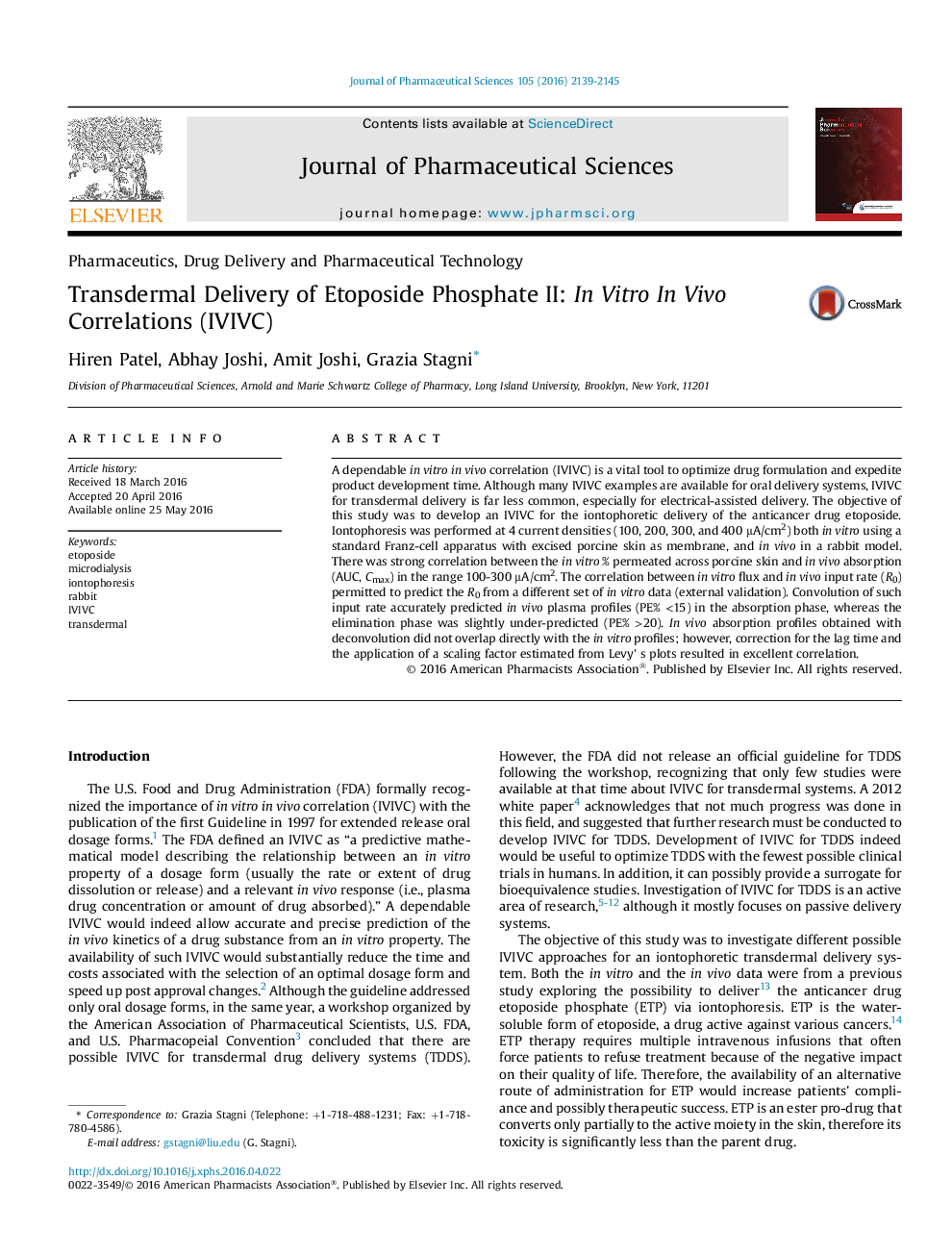| Article ID | Journal | Published Year | Pages | File Type |
|---|---|---|---|---|
| 2484217 | Journal of Pharmaceutical Sciences | 2016 | 7 Pages |
A dependable in vitro in vivo correlation (IVIVC) is a vital tool to optimize drug formulation and expedite product development time. Although many IVIVC examples are available for oral delivery systems, IVIVC for transdermal delivery is far less common, especially for electrical-assisted delivery. The objective of this study was to develop an IVIVC for the iontophoretic delivery of the anticancer drug etoposide. Iontophoresis was performed at 4 current densities (100, 200, 300, and 400 μA/cm2) both in vitro using a standard Franz-cell apparatus with excised porcine skin as membrane, and in vivo in a rabbit model. There was strong correlation between the in vitro % permeated across porcine skin and in vivo absorption (AUC, Cmax) in the range 100-300 μA/cm2. The correlation between in vitro flux and in vivo input rate (R0) permitted to predict the R0 from a different set of in vitro data (external validation). Convolution of such input rate accurately predicted in vivo plasma profiles (PE% <15) in the absorption phase, whereas the elimination phase was slightly under-predicted (PE% >20). In vivo absorption profiles obtained with deconvolution did not overlap directly with the in vitro profiles; however, correction for the lag time and the application of a scaling factor estimated from Levy' s plots resulted in excellent correlation.
